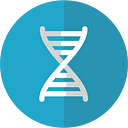Conference Impressions from Strategic Alliance Management for Pharma 2016
Earlier this week, I spent three stimulating days at the 6th annual Strategic Alliance Management for Pharma conference in Barcelona from 18th to 20th April 2016. In this blog post, I highlight those sessions and insights that I personally found most interesting and valuable.
This was my second successive year participating at this event, which comprised eighteen separate sessions spread over two and a half days. For the sake of brevity, I will only mention in this blog post those specific sessions I personally found most memorable and strongly relevant for my interests. All the sessions were fronted by experienced biopharma industry speakers and panelists-I’m sure for each and every session, there were many in the audience who found that session helpful and relevant for their own needs.
Pre-conference Workshop
The event kicked off with a pre-conference workshop on “designing and setting up alliances for successful execution”, convened the afternoon prior to the main conference. I was asked to lead this three-hour workshop (split into two sessions with a coffee break) and was delighted to have a compact group with good dynamics who openly voiced their opinions. It was clear that many of the same pain points were shared by most people, although the alliances they represented ranged from early academic research collaborations all the way to commercial alliances and product supply partnerships.
“Win-win” thinking, relationship building and clear expectations were key themes underlying much of our discussion-these being the foundations without which the formal agreements, governance structures and joint operating processes could not function effectively. With these themes in mind, the interaction between the Alliance Management and Business Development functions was seen to be crucial at certain stages of the partnering process. In addition, another important theme was building in the flexibility to anticipate and manage changes in alliance goals, team membership and working arrangements as circumstances inevitably change.
Innovative Approaches
On the first full day of the main conference, I was particularly taken and inspired by the two sessions on non-traditional alliance approaches. Firstly, Téa Kekelidze from the Novartis Institutes for Biomedical Research (NIBR) outlined the innovative approach NIBR was taking to build networks between pharma and academia in pre-competitive space. Doing away with the usual alliance managers, steering committees, complex agreements and other partnership infrastructure, NIBR is seeking to stimulate a freer exchange of ideas, expertise and tools. To this end, it is driving direct interaction between its scientists and academia through outreach efforts, in-kind collaborations, sabbaticals, scholars-in-residence, mentoring, educating academia about drug discovery and many other activities. This fresh “no strings attached” approach aims to stimulate (at the early research stage) better insights with regards to disease etiology and more creative concepts for diagnosis and intervention. However, this style of open innovation does push against the entrenched paradigm of intellectual property (IP) management historically established by both industry IP departments and academic technology transfer offices (TTOs). Nevertheless, I hope more pharmas and more academic TTOs will start thinking along these lines!
Secondly, I also very much appreciated the presentation by MedinCell’s CEO, Christophe Douat, outlining his company’s distinctive approach to alliances. To be honest, I have to admit that I had not heard of MedinCell before. But from what I can see, it is a perfect example of the partnering-centric company style that I described in the final chapter of my book on Biopharma R&D Partnerships -enabling successful partnering by promoting an internal culture and mindset optimized for partnering, focusing on collaborative behaviors, and building relationships with its partners at all working levels. This style owes its success to an emphasis on managing the people issues, both internally and externally. Of course, MedinCell also has the advantage of a technology platform with broad applicability, conducive to the creation of multi-project strategic alliances. This combination of management style and technology platform enables it to operate an unusual financial model of back-end loaded R&D partnership deals with no pre-launch milestone payments and comparatively higher post-launch profit sharing percentages.
No discussion of innovative approaches in biopharma alliances would be complete without mentioning the great work being done by the Structural Genomics Consortium (SGC). Wen Hwa Lee was once again on hand at this year’s conference to describe the SGC’s open access and open source philosophy for early-stage drug discovery, and provide an update on their activities. For those of you unfamiliar with the SGC, one of their important contributions to our industry is the target validation research and target-related tool creation that they perform and donate to the whole community, all of this done without filing any patents! Beyond the bioscience academia and biopharma companies that were their traditional collaborators, they are increasingly collaborating with patient and disease organizations. For example, in addition to the tool compounds and reagents they have historically generated and donated to the public domain, they are now also working on patient sample-derived primary cell assays. And they are seeking to promote the emergence of a broader and more efficient drug discovery ecosystem, including hosting a conference on this topic in June this year.
Reiterating the Fundamentals
Besides creative new approaches (as mentioned above), I also appreciate the opportunity to discuss the impact of doing the “fundamentals” of alliance management well, how to potentially do them better, and perhaps even how to apply them in a different context.
For example, I very much liked the case study of the alliance between Bayer and Evotec to jointly discover new endometriosis drugs, both sides sharing in the risks and returns. It was pleasing to see a well-coordinated joint presentation by Christoph Huwe and Steve Courtney, the respective alliance managers from each company. These kinds of co-creative collaborative projects necessitate frequent and extensive interaction by scientists from both sides, and are not easy to manage. So it was very nice to hear a positive case study of how such an alliance was being managed and how its challenges were being overcome. Since the five-year joint effort was announced in October 2012, the partnership has already resulted in four preclinical drug candidates.
Another stimulating session for me was the panel discussion on whether and how to integrate the Alliance Management function into the transaction process managed by the Business Development team. There were some differences of opinion that sparked a lively discussion amongst the five panelists as well as many members of the audience! While the discussion was good-humored, it nevertheless reminded me of the dilemmas faced in this part of the partnering process, where I feel there is often no single “best practice” solution (that applies in every context) for involving the alliance management function.
I also greatly enjoyed listening to Jakob Gjørret of Dako (a division of Agilent Technologies) talking about the distinctive dynamics and challenges of conducting collaborative projects with pharma companies to develop and register companion diagnostics (CDx) for the latter’s new drugs. I have (to date) limited exposure to the CDx world, so this was an educational session for me from the technical standpoint. What struck me particularly was the constant change and adaptation required in a project journey filled with uncertainty with respect to many key factors (“known unknowns”) as well as unexpected events (“unknown unknowns”). And all of this in a collaboration with a high degree of asymmetry between the two partners as regards business model, culture and a practical understanding of what each other does. This led me to wonder whether many of the things I do with my clients in drug discovery and exploratory drug development to manage with uncertainty and align asymmetric partners could also apply in the CDx context-watch this space!
Last but not least, I was fortunate to moderate a roundtable discussion (one of two parallel roundtables) on “managing alliances between small organizations and large global multinationals”-a topic after my own heart! We talked about the challenges caused by differences in culture, decision-making styles, the disproportionate importance of an individual alliance relative to the whole company, lack of continuity owing to frequent corporate reorganizations, and mismatched numbers of people that need to be involved from each side. While I have previously written much about all of these points in my articles and my book, I still greatly appreciated the discussion as one always picks up new nuances and examples when engaging with different people. A common takeaway for many of this roundtable’s participants was the need to make sure all their people involved in an alliance understand and respect the differences between two asymmetric parties, adapt their expectations accordingly and adopt the requisite flexibility.
PS: I would like to acknowledge my thanks to Claire Ceccon, the producer of this event for Marcus Evans Conferences, for inviting me to lead the conference workshop and moderate one of the roundtable discussions.

